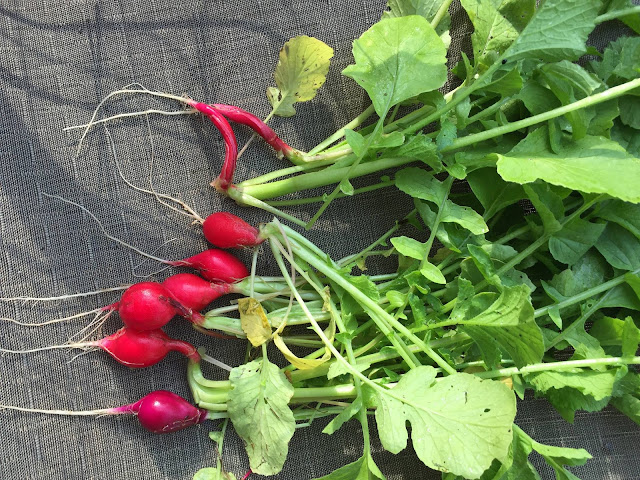At the plant swap in our local gardening community, a friend had a Opo Squash/ Bottle Gourd seedling to spare and I decided to try growing it for the first time in my yard. This was in mid April.
The Opo Squash/ Bottle Gourd seeds look like this.
The seedling I got was planted in a vegetable bed with a trellis behind it. I also tied some twine to help it grow further towards the maple tree nearby and use that for support. It was soon growing, sending out tendrils to hold on to anything it could find, and sprouting new leaves.
In another 10 days, I saw the first white flower that shriveled up by the end of the day. This is a male flower, with a slender petiole.
In another couple of weeks, there were female flowers too. They have a swollen base at the end of the petiole. These flowers were borne in abundance and a few were even fertilized, but none were growing. Perhaps all the rain we had in the month of May did not help.
Early June, the weather started getting dry and the first fruit began to grow. It is so exciting to see it in your yard after days of disappointments.
The vine had taken over the maple tree by now. There were fruit hanging way up there in the tree, and we had to use the telescopic arm to get them down.
The size was large, just under two feet long and this first one weighed about 3.5 lbs.
Another fruit harvested by the end of June.
A cross section of the squash looks like this. The central seeds need to be scooped out and the pulp is used to make a variety of side dishes, soups, and also dessert.
I made this dessert with the first squash from my yard. The pulp was grated, cooked with clarified butter for a little while, some milk was added and allowed to reduce, and finally some sugar, ground cardamom, with pistachios for garnishing.
The Opo Squash/ Bottle Gourd seeds look like this.
The seedling I got was planted in a vegetable bed with a trellis behind it. I also tied some twine to help it grow further towards the maple tree nearby and use that for support. It was soon growing, sending out tendrils to hold on to anything it could find, and sprouting new leaves.
In another 10 days, I saw the first white flower that shriveled up by the end of the day. This is a male flower, with a slender petiole.
In another couple of weeks, there were female flowers too. They have a swollen base at the end of the petiole. These flowers were borne in abundance and a few were even fertilized, but none were growing. Perhaps all the rain we had in the month of May did not help.
Early June, the weather started getting dry and the first fruit began to grow. It is so exciting to see it in your yard after days of disappointments.
The vine had taken over the maple tree by now. There were fruit hanging way up there in the tree, and we had to use the telescopic arm to get them down.
The size was large, just under two feet long and this first one weighed about 3.5 lbs.
Another fruit harvested by the end of June.
A cross section of the squash looks like this. The central seeds need to be scooped out and the pulp is used to make a variety of side dishes, soups, and also dessert.
I made this dessert with the first squash from my yard. The pulp was grated, cooked with clarified butter for a little while, some milk was added and allowed to reduce, and finally some sugar, ground cardamom, with pistachios for garnishing.

